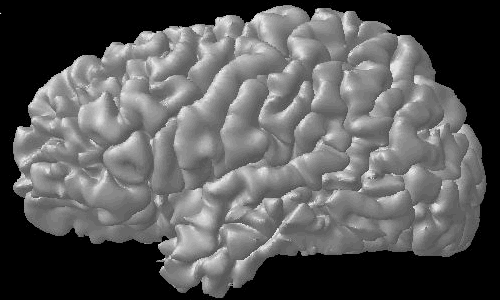
Basic V1 model.
Primary motivation for this model is to capture what is known about simple contextual modulation in V1, and compare modeled responses against measured responses. Although one has to be careful using the words feedforward and feedback when talking about projects that have only psychophysics and fMRI for data, it is nonetheless useful to think of the basic model as capturing feedforward responses -- basic interactions like surround suppression and cross-orientation inhibition that happen in the absence of attention or awareness. Additional layers in the model characterize how V1 responses might be modulated by feedback.
The model is conceptually simple, and computationally simple as well. It is fundamentally a linear-nonlinear style of model with a spatial array of linear receptive fields and divisive normalization (Carandini, Heeger, Movshon 1997) derived from two simple rules for local interaction laid out in Cavanaugh et al 2002: un-tuned inhibition at short range (~250 microns), and orientation-tuned facilitation at longer range (a few mm across cortex). A good set of test cases is illustrated at right -- predicted response to superimposed orthogonal Gabor patches should be weaker than the response to a single Gabor patch (cross-orientation inhibition), and parallel Gabor patches should be suppressed relative to orthogonal patches.
Developing this model resulted in a key insight into the problem of inferring neural activity from the BOLD response. The bar plot above illustrates the relative response in a population of neurons tuned to the orientation of the target stimulus. However, the BOLD response reflects the average response across not just this sub-population, but across the entire population of neurons tuned to all orientations. Because separate inhibitory neural populations provide both tuned and untuned suppression (something I'm interested in because of the implications for understanding how schizophrenia affects early visual mechanisms, and whether contrast gain control and orientation-tuned suppression might be differentially affected), there are stimulus conditions in which suppression of one population of neurons releases the rest of the local population from suppression, as illustrated at right.
Additional mechanisms are also built into the model -- iso-orientation suppression that operates over a longer distance than might reasonably be attributed to V1 (6-7 mm on cortex) and collinear facilitation that is similarly large-scale. One of the fun aspects of the model is incorporating the log-polar transofrm necessary to predict spatially distributed patterns on the surface of primary visual cortex. Building this last stage of the model also helps me think about the meaning of spatial resolution, and what spatial scales are important in designing high-resolution fMRI experiments.